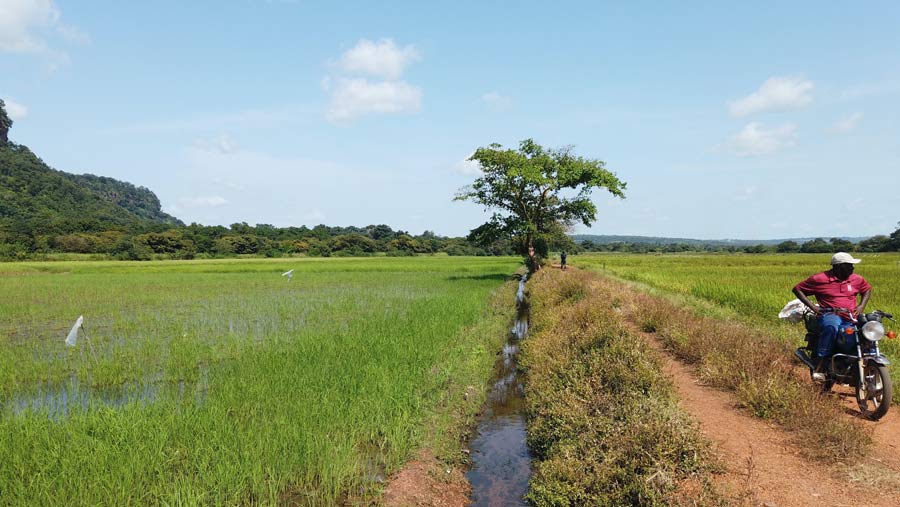Video: Bridging the rice yield gap in Guinea
 ©Philip Case/MAG
©Philip Case/MAG Rice is the main staple in Guinea and it plays a big part in diets in western and central Africa, as in many regions of the world.
Most rice is produced in Guinea by smallholder/subsistence farmers in rural areas where more than 70% of the population lives.
See also: International agriculture: Prospects for Guinea
Yields achievable for smallholder farmers are usually below 2t/ha, but projects are under way to create new varieties with higher yields, better quality and resistance to pests, diseases and drought conditions.
During a recent press trip to Guinea, funded by the British Guild of Agricultural Journalists (BGAJ), Farmers Weekly chief reporter Philip Case visited the Centre of Agronomy Research in Kilissi, Kindia prefecture.
Plant breeders and technical agronomists were on hand to discuss the challenges encountered by farmers and the solutions they are working on to improve rice cultivation.
Rice production in Guinea – the facts
- In Guinea, rice is the most important agricultural product in the country’s farming sector.
- Rice production in Guinea is essentially carried out by smallholder/subsistence farmers and is essentially rain-fed and characterised by low productivity and vulnerability to climatic shocks.
- Post-harvest losses in relation to rice production are estimated at 10-20%.
- Rice is the largest imported food item in Guinea, making up almost 40% of all food imports and accounting for 690,000t in 2020 and over $200m (£162m) each year.
- Foreign firms are looking to invest in agricultural projects in Guinea, such as rice production in the northern region of Boke.
Sources: Ministry of Agriculture, Guinea and US International Trade Administration

